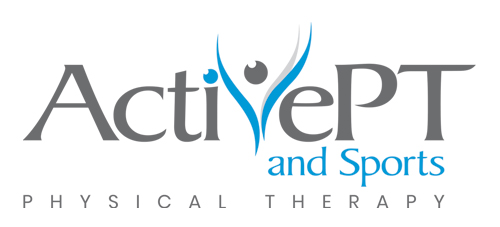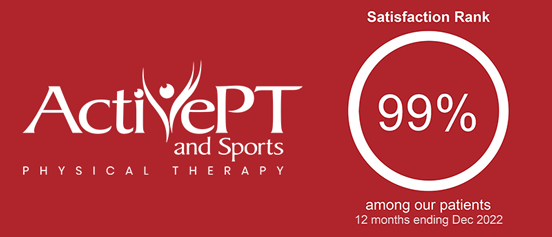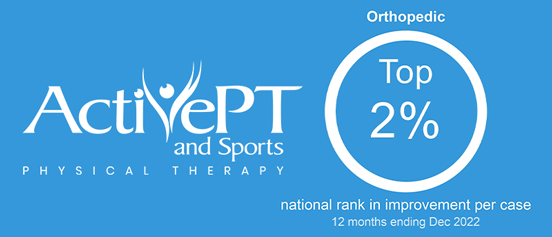Velocity and Injury Prevention
By, Robin Heilskov, PTA, APP
Every pitcher wants to throw harder. An increase in velocity can be a way to help pitch at a higher level. However, we know throwing harder can lead to more injuries.
Years ago, it was believed that throwing curveballs was damaging to your arm and throwing them at a young age led to more injuries. Through research, we have found that throwing a fastball puts more stress on your elbow than any other pitch.Thus, we can conclude that throwing with more velocity can lead to more injury.
This graph illustrates the rise of Tommy John injuries (TMJ) with the increase in average velocity in the Major Leagues.
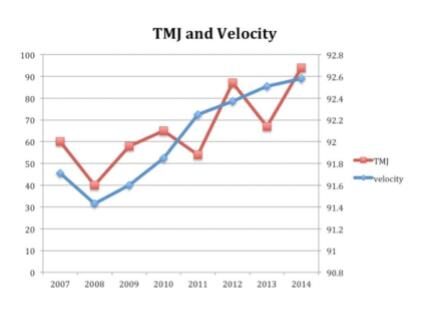
So, the big question is, how do you increase your velocity without injuring yourself?
One of the first ways that we can throw harder, and reduce our risk of injury, is to improve arm strength. Strength training is a great way to build muscle in order to throw harder and also improve the resiliency to withstand the stresses of a season. Strength training should include all parts of the body. We should have a good balance of shoulder, core, and lower extremity exercises. If you strengthen only your upper body, you are doing your throwing arm a disservice.
Strength training should include weights, bands, medicine balls, and plyometrics. There numerous studies that show this can help prevent injury and increase velocity. Below, Brandon Voth, DPT, OCS, and I go through a group of strengthening exercises you can perform at home.
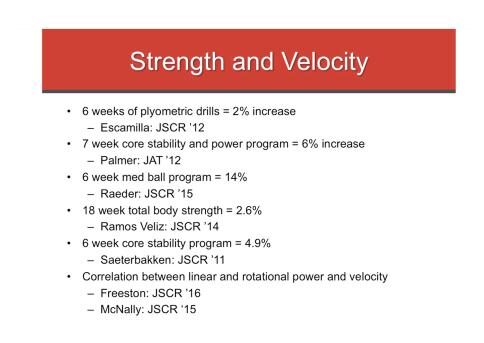
– Reinold [su_youtube url=”https://www.youtube.com/watch?v=4l7-K98NOs4&list=PLXxzA0BmF–NnMOKI9viF7qJH3VLi8Q5a”]
The next way you can reduce injury and improve velocity is to improve your mobility. In last week’s blog, Brandon Voth, DPT blogged about the risk of injury if you have poor mobility. He discussed ways to improve our mobility through stretching. Improvement in mobility has also been shown to increase velocity, especially external rotation (ER). Studies show that the more ER you have the harder you throw.

(Shoulder External Rotation)
Lastly, one of the ways we can improve our velocity and reduce your risk of injury is to throw. Note, there is a difference between throwing and pitching. As Brandon described in an earlier blog, pitching >100 innings in a year = 3X increase in injury risk, average >80 pitches in a game = 4X increase in injury risk, pitching >8 months per year = 5X increase in injury risk. However, playing light catch often, especially when younger, will have a tremendous impact on reducing injury risk. Throwing will help improve your shoulder external rotation mobility by producing more “layback” while your bony structures are maturing. It will also help to improve your mechanics and efficiency while throwing. We’ll touch on mechanics in future weeks.
Other popular velocity training programs that are not discussed in this blog are weighted ball training and long toss programs. Both of these types of training have shown to help improve velocity and examples of these are all over the internet. I will caution each baseball player that, while they can be effective, they are not without risk. Weighted balls have been specifically studied and results are showing that although velocity increases, those who train with weighted balls are at a significantly higher risk for injury due to improper dosing by coaches, trainers, and instructors. As we find out more about proper programming for weighted balls and long toss programs, we may find them to be an effective way to safely increase velocity. Until then I would recommend making sure you have a guided plan on how to use them from a trustworthy source.
Big takeaways to help improve your velocity and reduce injury:
- Strength train – all areas of the body
- Improve your mobility
- Play catch and work on mechanics, don’t just pitch
Each of these options to increase velocity are low risk and high reward. If you have questions regarding an injury, exercise program, or velocity program please feel free to reach out to myself, Robin Heilskov, PTA, APP, or Brandon Voth, OCS, DPT, or set up a free 15-minute screening appointment. We look forward to working with you and keeping you on the field.
